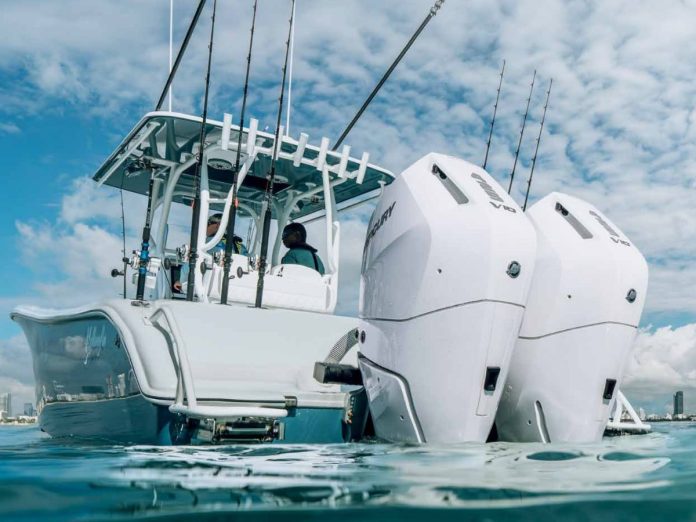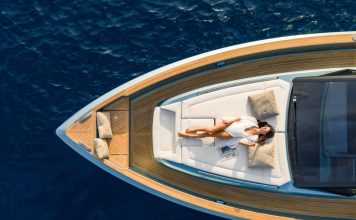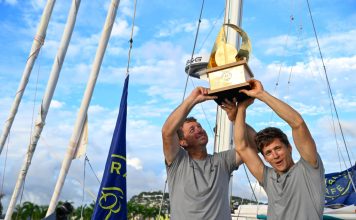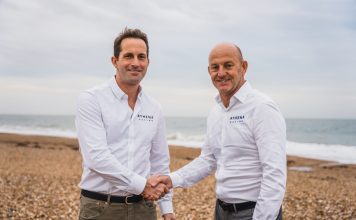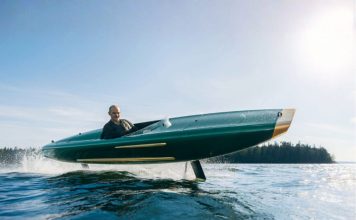Since 1971, the Herreshoff Marine Museum has preserved the memory of the legendary ‘Wizard of Bristol’ while celebrating the America’s Cup Hall of Fame inductees.
There’s a museum in Rhode Island that should never fall off the ‘radar’ of boating enthusiasts. It’s the Herreshoff Marine Museum in Bristol, dedicated to the legendary Nathanael ‘Nat’ Herreshoff, almost certainly the most brilliant sailing boat designer of all time. The museum is located in a setting of great natural beauty: a bay dotted with islands and lighthouses and crossed by mist-cutting suspension bridges. Those who remember the America’s Cup challenges involving the 12-metre International Rule in nearby Newport will have no difficulty understanding what that is about.

The museum was established in 1971 by A. Sidney DeWolf Herreshoff (1866-1977), one of the sons of Captain ‘Nat’, and his wife Rebecca (d. 1991) to preserve what remained of the Herreshoff Manufacturing Company, the historic shipyard active between 1863 and 1945, precisely where the hangar that houses the museum stands today.
In 1992, Halsey Chase Herreshoff (b. 1933), son of Sidney and therefore Nathanael’s grandson, also founded the America’s Cup Hall of Fame on the same premises to honor the most extraordinary figures of the oldest sailing trophy. Twelve New Zealanders are part of the story, second in number only to Americans, who number 54. Among the Italians (just two, including the naturalised Swiss Ernesto Bertarelli), is Patrizio Bertelli, who, in addition to having promoted all Prada’s challenges, is the proud owner of two Herreshoff-designed boats: a Bar Harbor 31 and a tiny P-Class, one of the smaller classes of the Universal Rule formulated by Nat himself and officially introduced in 1903. Compared to the ‘Seawanhaka Rule’ previously in use in North America and for the America’s Cup, the Universal Rule considered not only the length and sail surface of the boats but also their displacement..

THE HERRESHOFFS
Of Prussian origin, the Herreshoffs (pronounced ‘Her-res-hoff,’ not ‘Her-re-shoff’) relocated from Old Forge (New York) to Bristol between the 18th and 19th centuries. Nat (1848-1938) was one of the nine children of Charles Frederick Herreshoff III, who had given him two names: Nathanael Greene, the first and last name of a gallant general in Washington’s Continental Army.
In 1878, Nathanael, fresh from a bachelor’s degree in mechanical engineering at MIT and an internship in Providence, entered into a partnership with his brother John B, who was blind but a solid administrator, to build boats on a full-time basis, an activity in which the family had engaged in their spare time since the late 1850s. The oldest Herreshoff yacht, built in the winter of 1859-60, the catboat Sprite still exists and is today exhibited at the Herreshoff Marine Museum. The builder, however, had always identified 1863 as the year when construction activities officially began (this appears in the catalogues printed in the early 1900s).
Nathanael’s talent for innovation found expression in the design and variety of the lightweight construction materials used. Fast, steam-powered craft were built, catching the attention of the US Navy, which in 1878 purchased the famed Lightning torpedo boat for experimental evaluation. This was followed by Stiletto (1885), a 29m wooden torpedo boat with a 31-ton displacement capable of exceeding 18 knots. It was assigned to the Newport naval base.


SLIDING DOORS
In 1888 Nat ‘squeezed’ the 42m, 875hp steam yacht Say When beyond its limits, causing a tragic accident. A boiler pipe burst, and a stoker lost his life. This fatality led to Herreshoff’s Steam Engineer’s license being revoked for life. As a result, he was forced to dedicate himself primarily to sailing boats. At the time, he couldn’t imagine the prospect, but in fact this turn of events provided an opportunity to discover his true calling.
From 1891 onwards, his sailing boats, Gloriana, Wasp, Dilemma, and many others began to dominate the New England racing courses and were systematically copied. His legendary catamaran Amaryllis, a replica of which was built in the 1930s and is found in the museum, was so fast that it was indefinitely banned from all racing courses. Fin-keels, introduced by Herreshoff on his monohulls, spread and became a standard worldwide.
Thanks to the successes of his designs, Nat soon became the most sought-after naval architect, a status that earned him the nickname ‘Wizard of Bristol.’ The wealthiest moguls and boatowners of the New York Yacht Club turned to him to defend the America’s Cup from the assaults of Lord Dunraven and Sir Thomas Lipton.
Between 1893 and 1920, five Herreshoff designs (Vigilant, Defender, Columbia, Reliance and Resolute) successfully defended the Cup in six editions of the event. In 1930 and 1934, the winners were two J-Class yachts designed by W Starling Burgess (Enterprise and Rainbow). But since they were both built in Bristol at the Herreshoff Manufacturing Co, it is more than fair to assert that the Herreshoff name was the definitive protagonist in eight consecutive America’s Cup defense campaigns.
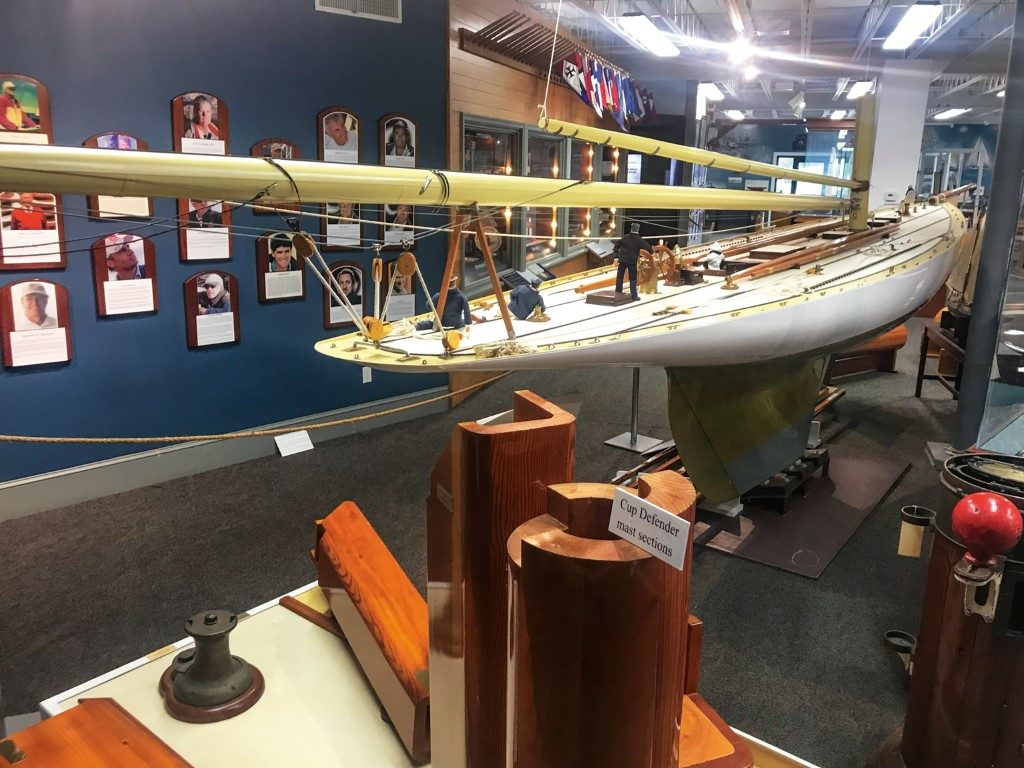
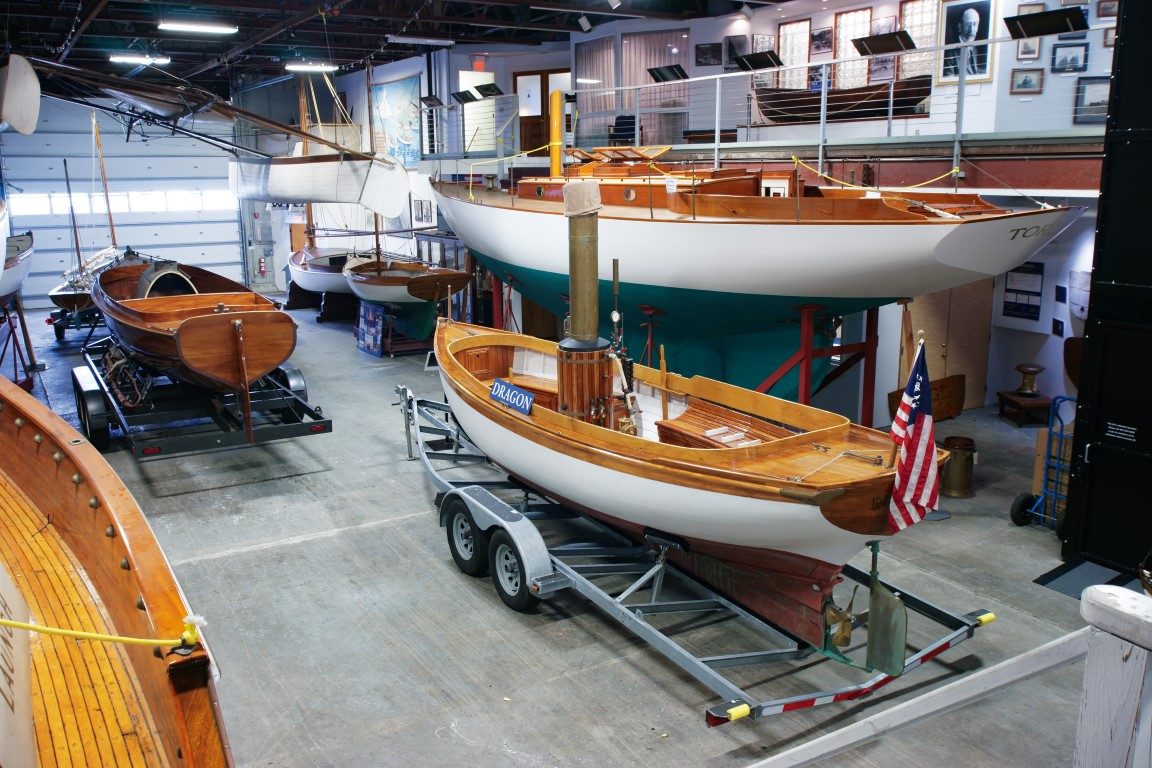
THE EXHIBITS
The collection of the Herreshoff Marine Museum includes 61 full-scale boats, but the objects on display are very varied and much more numerous. The entrance is adjacent to the hall dedicated to the abovementioned America’s Cup Hall of Fame, where one can find descriptive panels, glass cases with the models of several defenders and challengers, and an impressive 1:6 scale replica of the legendary Reliance (1903), a cutter operated by a crew of 64 with a sail area of just under 1,500m2 (nearly 16,000 square feet!). On the walls, one sees the faces of the 95 Hall-of-Fame inductees, all mounted on wooden crests.
The second section of the museum is dedicated to the modest origins of the shipyard (which employed 400 people at the peak of its success) and to the activity of Nathanael as a mechanical engineer before the fatal accident of 1888. The main hangar contains sailing and motor boats, and stairs lead to the upper level, from which one may study the boats with an alternative perspective. Unfortunately, many original boats have been lost, and nothing survives of the America’s Cup, except a few components and sections of spars.
Yet, thanks to the generosity of some philanthropists and builders, the museum has welcomed accurate replicas built according to the original designs over the years, which are in the safe hands of MIT in Boston.
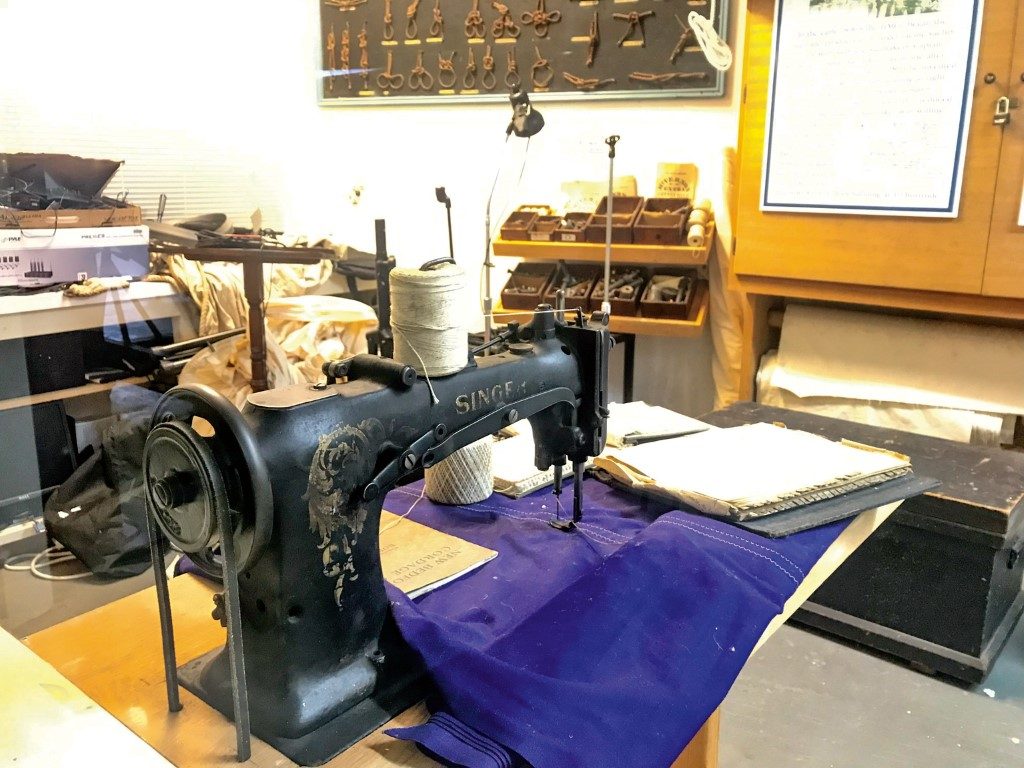
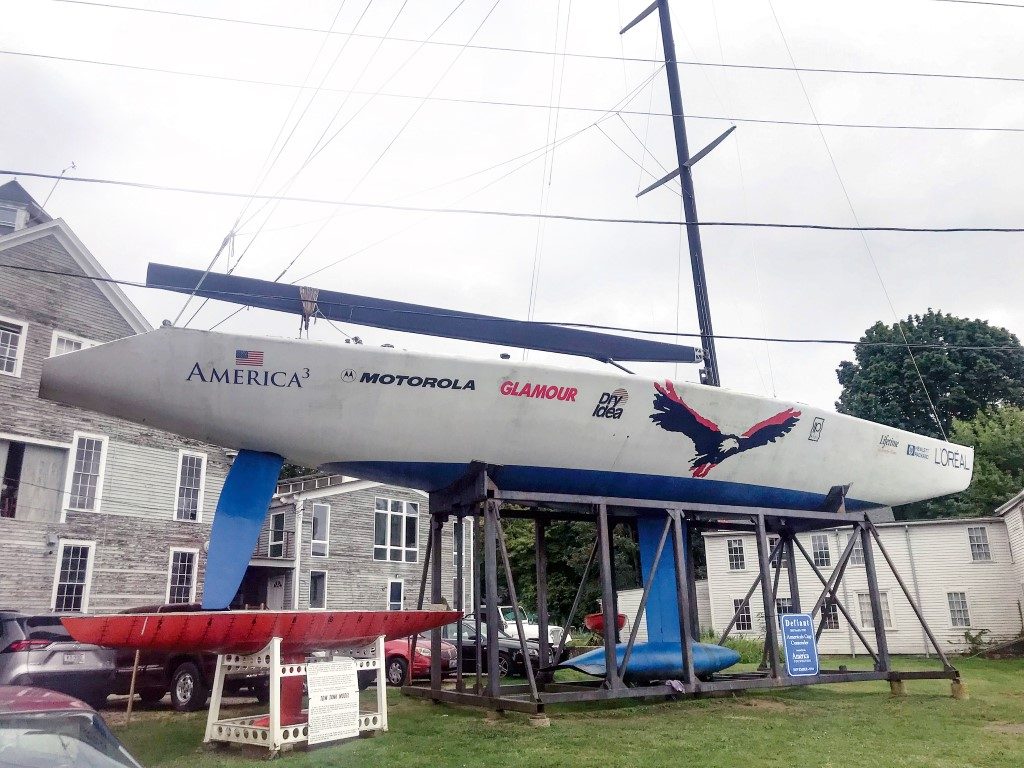
Then, there is a sail loft and a somewhat sacred room: the Model Room, where much of the 500-strong half-model collection is hung. Those who know Herreshoff’s genius are well aware that his approach was highly intuitive. He would personally shape a model out of a block of softwood, and after detecting the measures from these half-models using a special pantograph, he would ask his staff to draw the definitive lines.
Apparently, Nat did not even trust the tank tests: he knew very well that racing regattas were one thing, and towing a model in the calm waters of a tank quite another. It is said that in 1901, after Shamrock II was defeated by Herreshoff’s Columbia in the New York Harbor (despite the former being hydrodynamically more efficient than the latter), his archrival Scottish designer G.L. Watson said in despair: “I wish Herreshoff had had a towing tank!”
In creating his Shamrock II, Watson had taken everything into account, except for one thing: the instinct of a man who was born to design sailing boats and win everything he entered. BNZ












